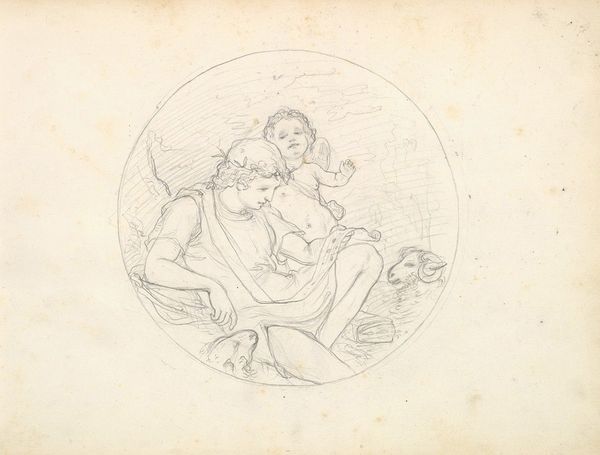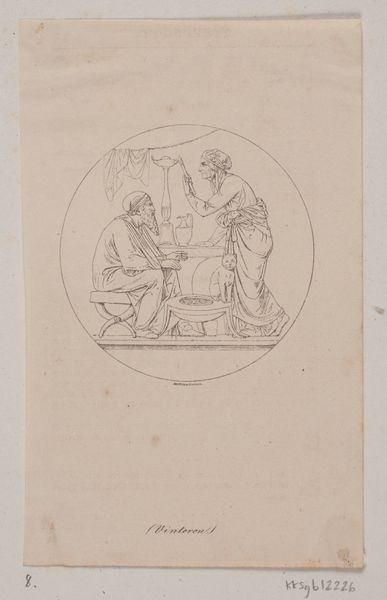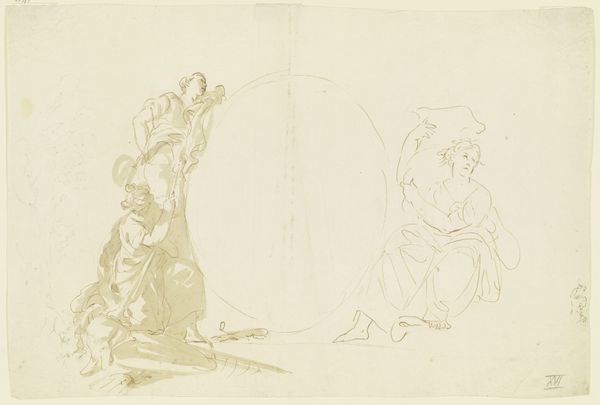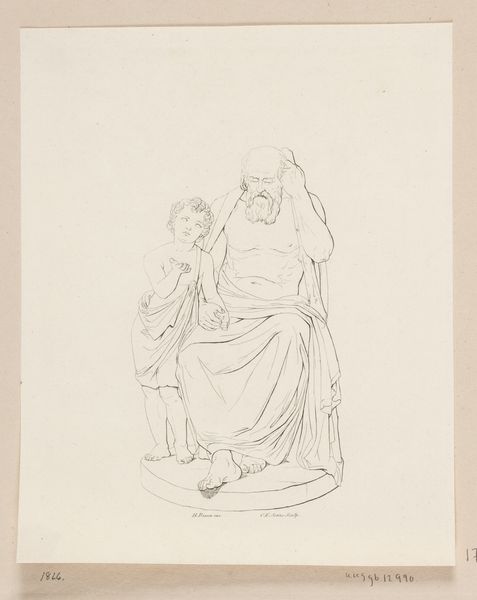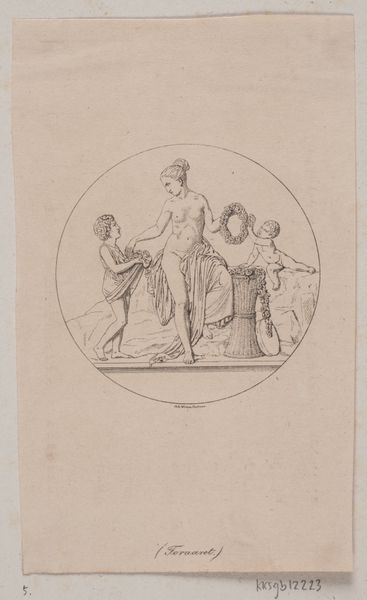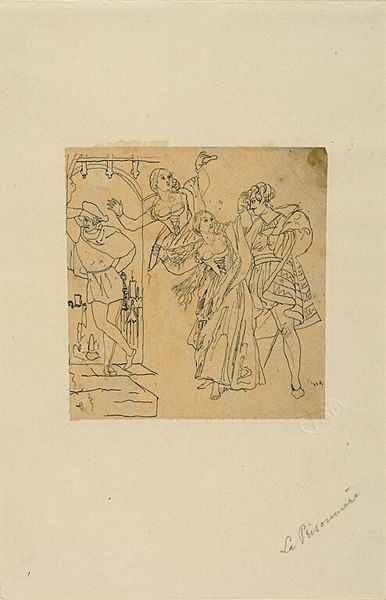
Sergel arbejder i sit atelier med at hugge en statue af Minerva 1795 - 1800
0:00
0:00
drawing, sculpture, pencil
#
portrait
#
drawing
#
neoclacissism
#
figuration
#
form
#
sculpture
#
pencil
#
line
#
history-painting
#
academic-art
Dimensions: 181 mm (height) x 178 mm (width) (bladmaal)
Editor: So, this drawing, "Sergel arbejder i sit atelier med at hugge en statue af Minerva," made with pencil around 1795-1800 by J.F. Clemens, depicts a sculptor at work. It’s cool how you can see the process, but it feels very formal and staged. What do you see in terms of its historical context? Curator: The staged feeling is precisely the point. Consider the rise of Neoclassicism during this period. Artists like Sergel sought to revive the aesthetics and, more importantly, the *values* of ancient Greece and Rome. This wasn’t merely an artistic preference; it was a cultural project, promoted by academies and aligned with emerging political ideologies emphasizing reason and order. The image then functions as a demonstration of how a true artist embodies those values, literally shaping Minerva, the goddess of wisdom and strategic warfare. Editor: So, the drawing isn't just showing us Sergel, it's making a statement about the role of the artist in society? Curator: Exactly. It's a visual argument for the importance of the artist, positioning them as a key figure in shaping public virtue and upholding the ideals of a new era. Notice also the placement of the portrait on the wall. What does that say about Sergel’s affiliations? Editor: I see a profile there; perhaps a patron? The figure's inclusion underscores the artist’s dependence on those social connections, maybe reinforcing the political dimension you're mentioning? Curator: Precisely. It reveals the patronage system that underpinned artistic production and how art served specific social and political functions. So, what are you taking away from this piece now? Editor: I now see the drawing less as a simple depiction, and more as a window into the complex interplay between art, politics, and cultural values in the late 18th century. Curator: And that's the power of art historical analysis! It reveals how seemingly straightforward images are often loaded with social and cultural meaning.
Comments
No comments
Be the first to comment and join the conversation on the ultimate creative platform.



